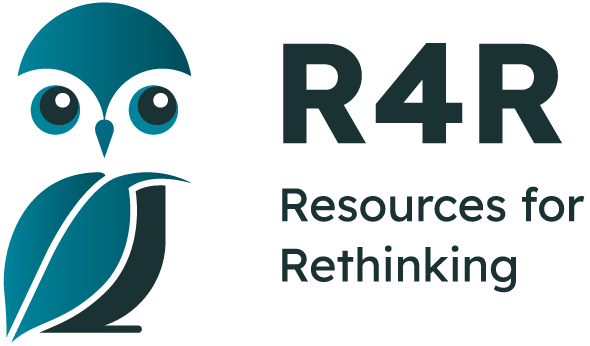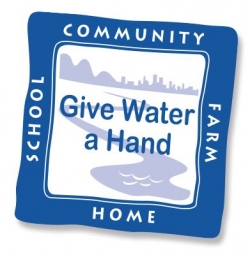Search for Resources
Description
The Give Water A Hand program is presented in two books which can be downloaded as pdf files. The Action Guide presents a stepwise process to organize and carry out an action-oriented project to protect and preserve watershed resources. The Leader Guidebook, also available as pdf, is designed to assist the teacher or group leader.
Students research water and watershed issues, choose a local area of focus, map the area and team up with natural resource experts and committed community members to study water issues and take ACTION on their behalf!
General Assessment
What skills does this resource explicitly teach?
- Mapping an area, particularly a watershed.
- Analyzing water consumption.
- Planning and organization.
- Taking action.
- Working with experts.
Strengths
- This is a well thought out resource that will likely be timeless.
- There is enough background information to get the groups started but they would have to access local experts to assist in the project.
- The teacher resource will help a teacher understand and plan what is to be done.
- The students resource is so thorough a person with no experience in the area could lead a group to an action project by following this protocol.
Weaknesses
- There is a lack of specific assessment tools but any work done could be marked and completion of the project could be evaluated.
Relevant Curriculum Units
The following tool will allow you to explore the relevant curriculum matches for this resource. To start, select a province listed below.
- Step 1Select a province
- Alberta
- Step 2Select a grade level
- Grade 9
- Step 3Select a subject
- Environmental Science
- Step 4Relevant matches
- Environment and Outdoor Education: Commitment to Action
- Environment and Outdoor Education: Environmental Investigations
- Grade 10
- Step 3Select a subject
- Technological Education
- Step 4Relevant matches
- AGR1010: Introduction to Agriculture
- Grade 12
- Step 3Select a subject
- Technological Education
- Step 4Relevant matches
- Agriculture - ENS3120: Water Management
- British Columbia
- Step 2Select a grade level
- Grade 12
- Step 3Select a subject
- Environmental Science
- Step 4Relevant matches
- Environmental Science 12: Human actions affect the quality of water and its ability to sustain life.
- Manitoba
- New Brunswick
- Step 2Select a grade level
- Grade 12
- Step 3Select a subject
- Environmental Science
- Step 4Relevant matches
- Advanced Environmental Science 120: Earth Systems
- Introduction to Environmental Science 120: Sustainable Development
- Newfoundland & Labrador
- Step 2Select a grade level
- Grade 10
- Step 3Select a subject
- Science
- Step 4Relevant matches
- Science 1206: Sustainability of Ecosystems
- Grade 11
- Step 3Select a subject
- Science
- Step 4Relevant matches
- Science 2200: Ecosytems
- Grade 12
- Step 3Select a subject
- Environmental Science
- Step 4Relevant matches
- Environmental Science 3205: Water Use & the Environment
- Nova Scotia
- Ontario
- Step 2Select a grade level
- Grade 9
- Step 3Select a subject
- Geography
- Step 4Relevant matches
- Issues in Canadian Geography (Academic): Geographic Inquiry and Skill Development
- Issues in Canadian Geography (Academic): Interactions in the Physical Environment
- Grade 11
- Step 3Select a subject
- Environmental Science
- Step 4Relevant matches
- Environmental Science (Univ/College Prep.) Human Health and the Environment
- Environmental Science (Univ/College Prep.) Sustainable Agriculture and Forestry
- Environmental Science (Workplace Prep.) Human Impact on the Environment
- Geography
- Step 4Relevant matches
- Introduction to Spacial Technologies: (Open):Using Spacial technologies to Support Sustainability and Stewardship
- Grade 12
- Prince Edward Island
- Step 2Select a grade level
- Grade 10
- Step 3Select a subject
- Science
- Step 4Relevant matches
- Science 431A: Life Science, Sustainability of Ecosystems
- Grade 12
- Step 3Select a subject
- Environmental Science
- Step 4Relevant matches
- Environmental Science 621A: Natural Resources
- Science
- Step 4Relevant matches
- Agriscience 801A: Soil and Water Management
- Quebec
- Saskatchewan
- Yukon Territory
- Step 2Select a grade level
- Grade 12
- Step 3Select a subject
- Environmental Science
- Step 4Relevant matches
- Environmental Science 12: Human actions affect the quality of water and its ability to sustain life.
Themes Addressed
Water (1)
- Watershed Protection
Sustainability Education Principles
| Principle | Rating | Explanation |
|---|---|---|
| Consideration of Alternative Perspectives | Good |
|
Consideration of Alternative Perspectives:
| ||
| Multiple Dimensions of Problems & Solutions | Very Good |
|
| Multiple Dimensions of Problems & Solutions: Effectively addresses the environmental, economic and social dimensions of the issue(s) being explored.
| ||
| Respects Complexity | Good | |
| Respects Complexity: The complexity of the problems/issues being discussed is respected. | ||
| Acting on Learning | Very Good | |
| Acting on Learning: Learning moves from understanding issues to working towards positive change — in personal lifestyle, in school, in the community, or for the planet
| ||
| Values Education | Very Good |
|
| Values Education: Students are explicitly provided with opportunities to identify, clarify and express their own beliefs/values. | ||
| Empathy & Respect for Humans | Satisfactory | |
| Empathy & Respect for Humans: Empathy and respect are fostered for diverse groups of humans (including different genders, ethnic groups, sexual preferences, etc.). | ||
| Personal Affinity with Earth | Very Good | |
| Personal Affinity with Earth: Encourages a personal affinity with -the natural world.
| ||
| Locally-Focused Learning | Very Good | |
| Locally-Focused Learning: Includes learning experiences that take advantage of issues/elements within the local community.
| ||
| Past, Present & Future | Good |
|
| Past, Present & Future: Promotes an understanding of the past, a sense of the present, and a positive vision for the future. | ||
Pedagogical Approaches
| Principle | Rating | Explanation |
|---|---|---|
| Open-Ended Instruction | Very Good | |
| Open-Ended Instruction
: Lessons are structured so that multiple/complex answers are possible; students are not steered toward one 'right' answer. | ||
| Integrated Learning | Very Good | |
| Integrated Learning: Learning brings together content and skills from more than one subject area
| ||
| Inquiry Learning | Good | |
| Inquiry Learning: Learning is directed by questions, problems, or challenges that students work to address.
| ||
| Differentiated Instruction | Good | |
| Differentiated Instruction: Activities address a range of student learning styles, abilities and readiness.
| ||
| Experiential Learning | Very Good |
|
| Experiential Learning: Authentic learning experiences are provided
| ||
| Cooperative Learning | Good | |
| Cooperative Learning: Group and cooperative learning strategies are a priority.
| ||
| Assessment & Evaluation | Satisfactory |
|
| Assessment & Evaluation: Tools are provided that help students and teachers to capture formative and summative information about students' learning and performance. These tools may include reflection questions, checklists, rubrics, etc. | ||
| Peer Teaching | Satisfactory | |
| Peer Teaching: Provides opportunities for students to actively present their knowledge and skills to peers and/or act as teachers and mentors.
| ||
| Case Studies | Good |
|
| Case Studies: Relevant case studies are included. Case studies are thorough descriptions of real events from real situations that students use to explore concepts in an authentic context. | ||
| Locus of Control | Very Good | |
| Locus of Control: Meaningful opportunities are provided for students to choose elements of program content, the medium in which they wish to work, and/or to go deeper into a chosen issue. | ||

